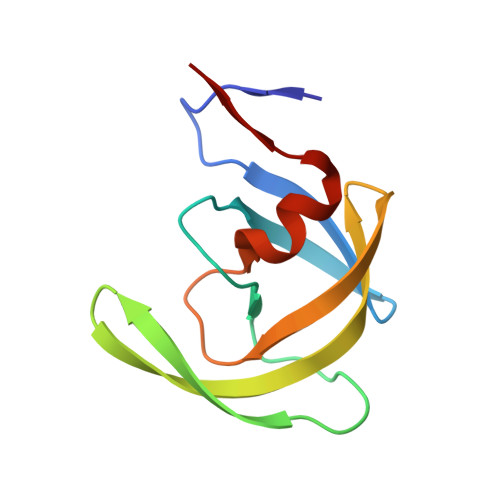Ninety-nine is not enough: molecular characterization of inhibitor-resistant human immunodeficiency virus type 1 protease mutants with insertions in the flap region
Kozisek, M., Saskova, K.G., Rezacova, P., Brynda, J., van Maarseveen, N.M., De Jong, D., Boucher, C.A., Kagan, R.M., Nijhuis, M., Konvalinka, J.(2008) J Virol 82: 5869-5878
- PubMed: 18400858
- DOI: https://doi.org/10.1128/JVI.02325-07
- Primary Citation of Related Structures:
2RKF, 2RKG - PubMed Abstract:
While the selection of amino acid insertions in human immunodeficiency virus (HIV) reverse transcriptase (RT) is a known mechanism of resistance against RT inhibitors, very few reports on the selection of insertions in the protease (PR) coding region have been published. It is still unclear whether these insertions impact protease inhibitor (PI) resistance and/or viral replication capacity. We show that the prevalence of insertions, especially between amino acids 30 to 41 of HIV type 1 (HIV-1) PR, has increased in recent years. We identified amino acid insertions at positions 33 and 35 of the PR of HIV-1-infected patients who had undergone prolonged treatment with PIs, and we characterized the contribution of these insertions to viral resistance. We prepared the corresponding mutated, recombinant PR variants with or without insertions at positions 33 and 35 and characterized them in terms of enzyme kinetics and crystal structures. We also engineered the corresponding recombinant viruses and analyzed the PR susceptibility and replication capacity by recombinant virus assay. Both in vitro methods confirmed that the amino acid insertions at positions 33 and 35 contribute to the viral resistance to most of the tested PIs. The structural analysis revealed local structural rearrangements in the flap region and in the substrate binding pockets. The enlargement of the PR substrate binding site together with impaired flap dynamics could account for the weaker inhibitor binding by the insertion mutants. Amino acid insertions in the vicinity of the binding cleft therefore represent a novel mechanism of HIV resistance development.
Organizational Affiliation:
Gilead Sciences and IOCB Research Center, Institute of Organic Chemistry and Biochemistry of the Academy of Sciences of the Czech Republic, v.v.i., Flemingovo 2, 166 10 Praha 6, Czech Republic.

















